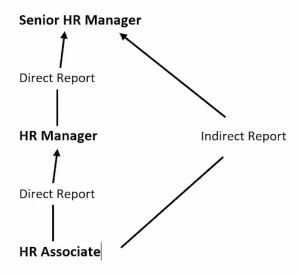

Direct reports form a cornerstone in organizational hierarchies, crucial for effective leadership. But what are direct reports exactly, and why do they play such a crucial role in corporate structures? To understand what direct reports are we must understand interpersonal dynamics, leadership responsibilities, and the intricate interplay that defines the professional ecosystem. In this article, we’ll define direct reports and unveil the intricate layers that comprise this fundamental facet of organizational synergy.
Table of Contents hideA direct report refers to an employee who is directly under the supervision and management of a particular individual, typically a manager or team leader. In simpler terms, it signifies the professional relationship between a superior and their subordinate.

Understanding the difference between direct and indirect reports is crucial for effective management, communication, and organizational coordination. Managers must navigate both structures adeptly to ensure optimal collaboration and productivity across the broader spectrum of their responsibilities.
Clearly articulate the responsibilities and expectations for each direct report. Develop job descriptions that outline key tasks, goals, and performance metrics. Regularly revisit and communicate any changes to ensure everyone is on the same page. This clarity promotes accountability and reduces the likelihood of misunderstandings.
Create an atmosphere where open communication is valued. Schedule regular one-on-one meetings to discuss progress, challenges, and career aspirations. Actively listen to your direct reports, provide a platform for them to express their ideas and concerns, and be receptive to feedback. Open communication fosters trust and a positive working relationship.
Feedback is a powerful tool for professional development. Provide feedback that is specific, actionable, and focused on both achievements and areas for improvement. Aim for a balance between positive reinforcement and constructive criticism, creating an environment where direct reports feel supported in their growth.
Identify opportunities for skill development based on both individual and organizational needs. Offer training programs, and mentorship opportunities, and encourage continuous learning. By investing in the professional growth of your direct reports, you not only enhance their capabilities but also contribute to the overall resilience and adaptability of the team.
Effective delegation involves understanding the strengths and capabilities of each direct report. Assign tasks that align with their skills and developmental goals. Provide clear instructions, set expectations, and establish check-in points. Avoid micromanaging to empower your direct reports, allowing them to take ownership of their work.
Create an environment that fosters collaboration among direct reports. Encourage cross-functional communication, knowledge-sharing, and collaborative problem-solving. Team cohesion enhances creativity and productivity, leading to a more dynamic and resilient work environment.
Acknowledge the accomplishments of your direct reports regularly. Recognition can take various forms, including public praise, awards, or small gestures of appreciation. Celebrating achievements not only boosts morale but also reinforces positive behavior, motivating your team to consistently excel.
When requesting tasks from direct reports, it’s crucial to communicate clearly and respectfully. Clearly outline the task, its importance, and any relevant deadlines. Use a collaborative tone, inviting questions and input. Effective communication builds trust and ensures that expectations are understood.
The optimal number of direct reports can vary based on factors such as the complexity of tasks, the manager’s experience, and the organization’s structure. As a general guideline, it’s recommended to balance workload and maintain effective communication. While there is no one-size-fits-all answer, most experts suggest that a manager can effectively oversee 5 to 10 direct reports, allowing for personalized attention and effective management without becoming overwhelmed. However, the specific circumstances of each role and organization should be considered when determining the ideal number of direct reports. Regular assessments and adjustments can help optimize managerial effectiveness.
In summary, effective management (of any management style) of direct reports is crucial for cultivating a thriving workplace. By setting clear expectations, fostering open communication, and providing constructive feedback, leaders can build a dynamic and resilient team. Encouraging skill development, wise delegation, and promoting collaboration contribute to a positive work culture.
As you can see, recognizing achievements, understanding how to communicate tasks, and determining an optimal number of direct reports further refine managerial skills. In essence, adept management of direct reports ensures individual and collective success, fostering a workplace that excels in innovation, adaptability, and sustained excellence.
Maria is a proud content guardian with experience working for international teams and projects of different complexities. Maria has a passion for fantasy novels, music, black-and-white films, and nitpicking (because there is always room for improvement!).